 They say a picture speaks a thousand words, so get ready to read fast!
They say a picture speaks a thousand words, so get ready to read fast!
First, this from the National Alliance for Public Charter Schools Dashboard on Ohio:
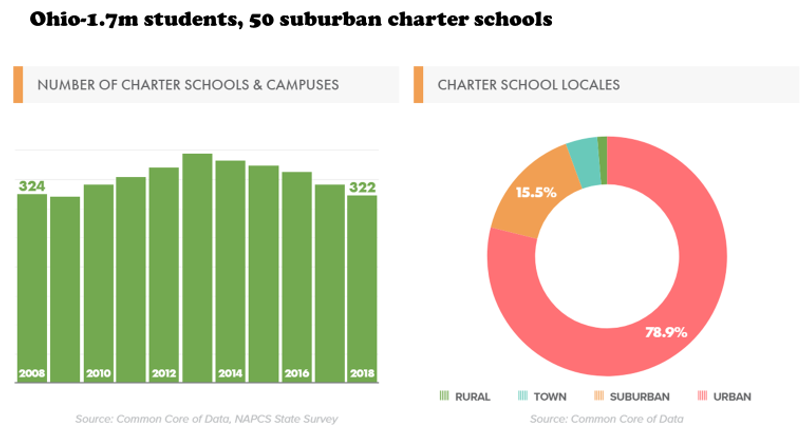 Now, the Fordham Foundation’s map of Ohio open enrollment (non)-participation by district:
Now, the Fordham Foundation’s map of Ohio open enrollment (non)-participation by district:
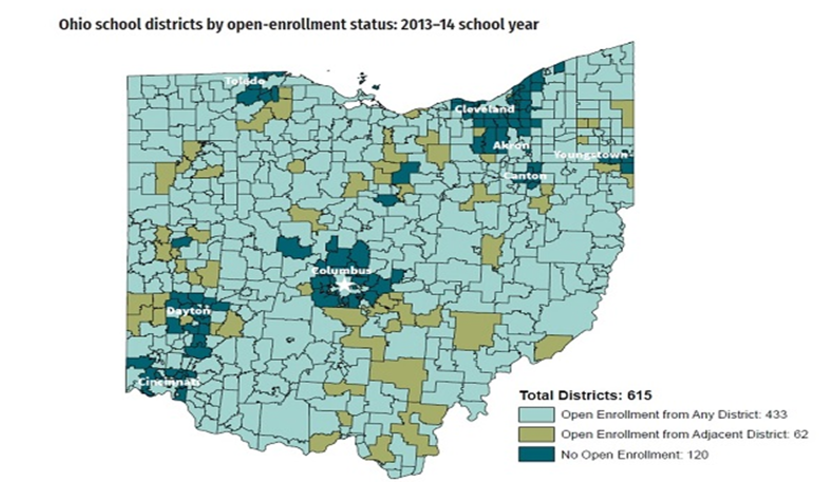 And next, the National Alliance for Public Charter Schools dashboard on Arizona:
And next, the National Alliance for Public Charter Schools dashboard on Arizona:
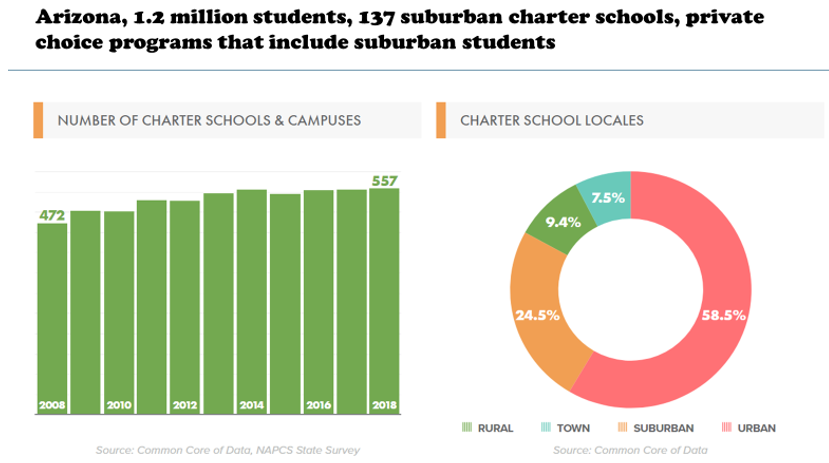 Okay, following the story so far? Fifty suburban charters are way too few to create the incentive for Ohio’s suburban districts to participate in open enrollment. Arizona has a far larger number as well as private choice programs with broader geographic reach.
Okay, following the story so far? Fifty suburban charters are way too few to create the incentive for Ohio’s suburban districts to participate in open enrollment. Arizona has a far larger number as well as private choice programs with broader geographic reach.
Now, here is an open enrollment district map of Arizona with non-participating districts indicated in dark blue, as they are on the Ohio map above:
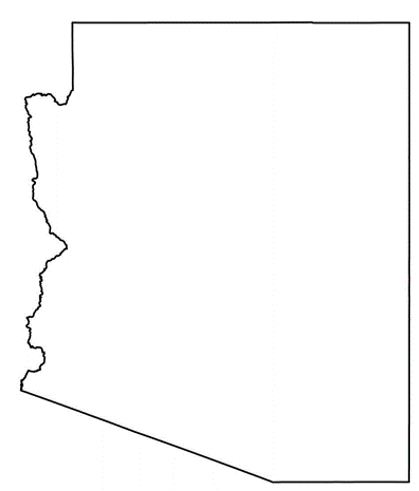 Okay, that was a slight exaggeration, but only slight. Right about now, 4,000 students in the Scottsdale Unified School District are there through open enrollment, and there are approximately zero, not only in Lakewood, Ohio, but pretty close to every suburban Ohio district.
Okay, that was a slight exaggeration, but only slight. Right about now, 4,000 students in the Scottsdale Unified School District are there through open enrollment, and there are approximately zero, not only in Lakewood, Ohio, but pretty close to every suburban Ohio district.
Ohio followed the strategy of focusing choice programs on urban areas for the opening decades of the choice movement. Arizona, meanwhile, created a more inclusive and diverse movement that included suburban and rural communities. How did this work out for disadvantaged students in each state? The Educational Opportunity Project at Stanford University details growth rates for Black students (Arizona = 1, Ohio =2) between 2008 and 2018:
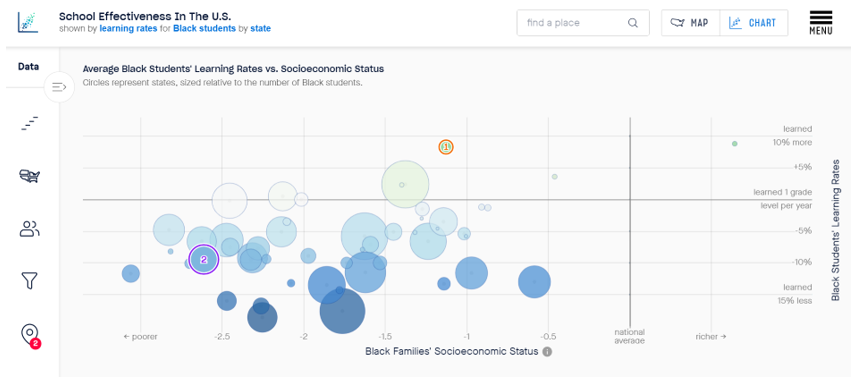 Still skeptical? Here is the same chart for low-income students:
Still skeptical? Here is the same chart for low-income students:
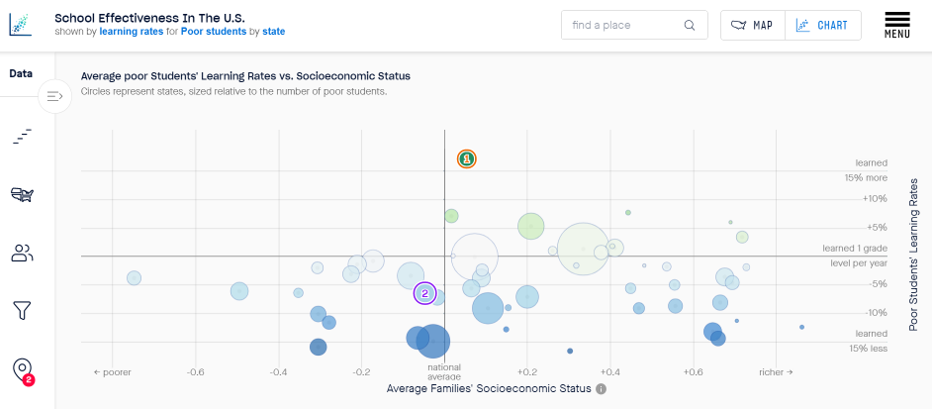 I think I still detect a slight hint of doubt in your mind, which just earned Ohio another beating, this time with Hispanic students:
I think I still detect a slight hint of doubt in your mind, which just earned Ohio another beating, this time with Hispanic students:
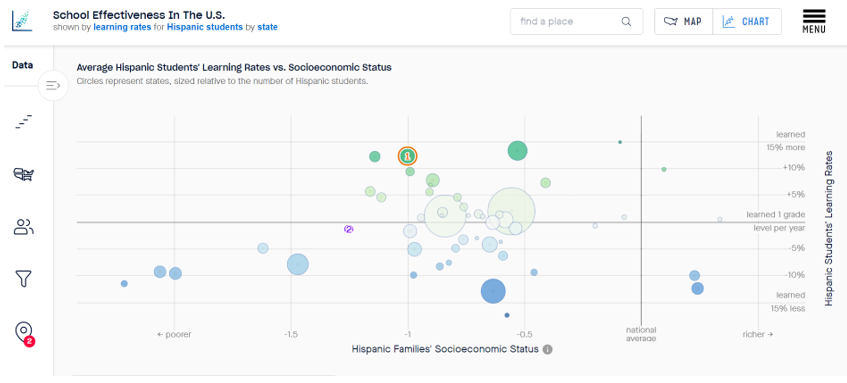 Don’t giggle too much watching Arizona put a whooping on Ohio, because regardless of where you live, Arizona probably could do something as bad or worse compared to your state during this period. We’ll have to see what happens going forward. I’m only picking on Ohio because the Fordham map documents what is broadly the case elsewhere: economic segregation in schooling is a problem.
Don’t giggle too much watching Arizona put a whooping on Ohio, because regardless of where you live, Arizona probably could do something as bad or worse compared to your state during this period. We’ll have to see what happens going forward. I’m only picking on Ohio because the Fordham map documents what is broadly the case elsewhere: economic segregation in schooling is a problem.
I made this mistake like everyone else. For many years I repeated the phrase, “the suburbs already have choice.” I was wrong about that.
I’ve learned my lesson: Inclusive choice programs create open enrollment opportunities that turn the choice knob to 11, and the main beneficiaries are disadvantaged students.